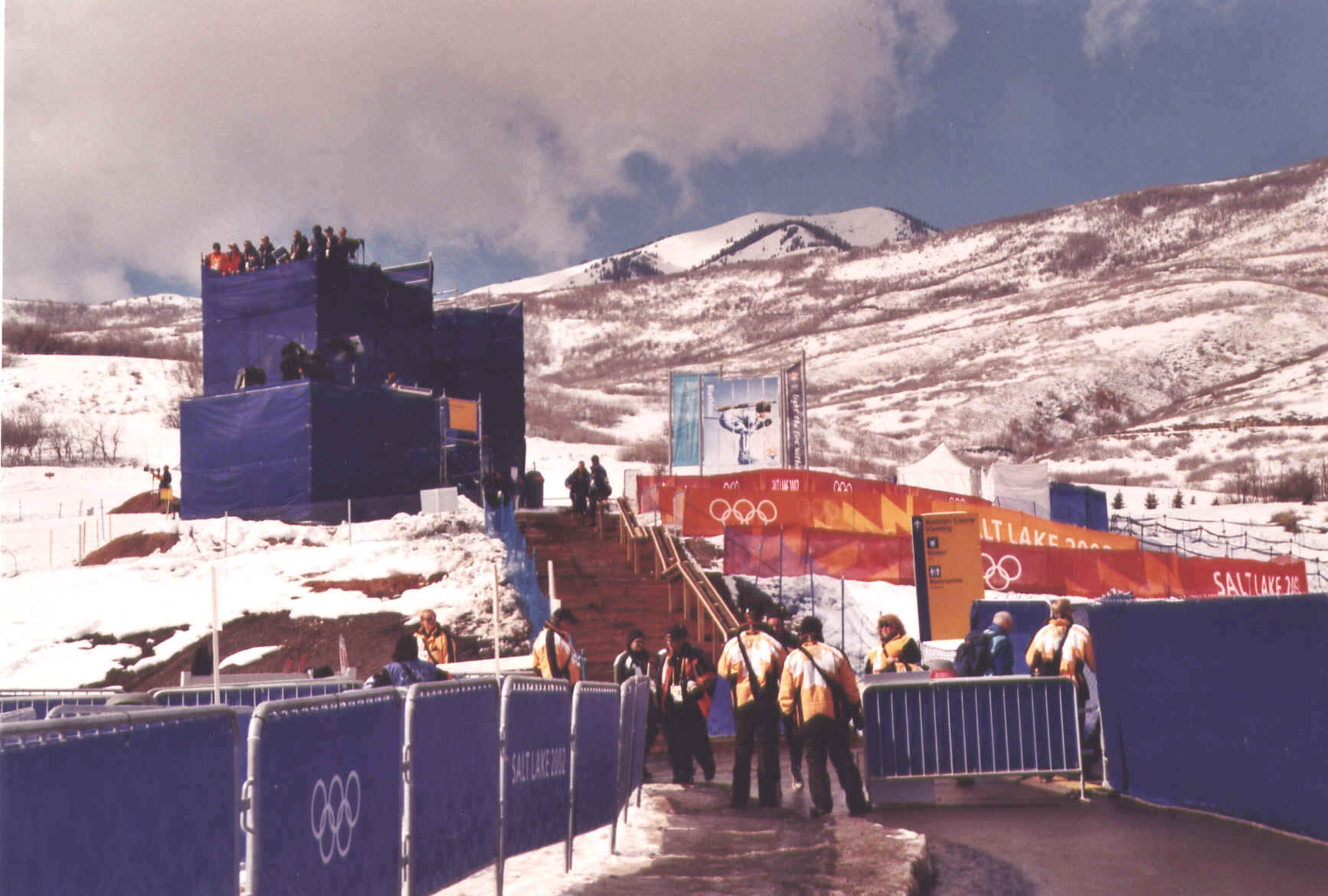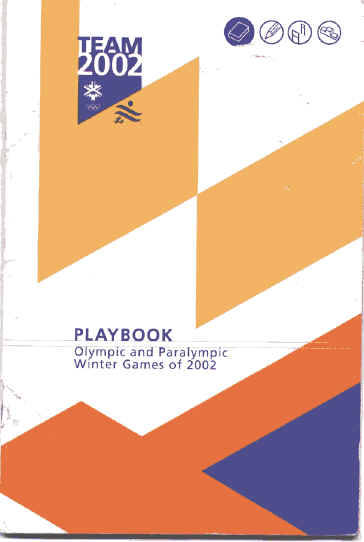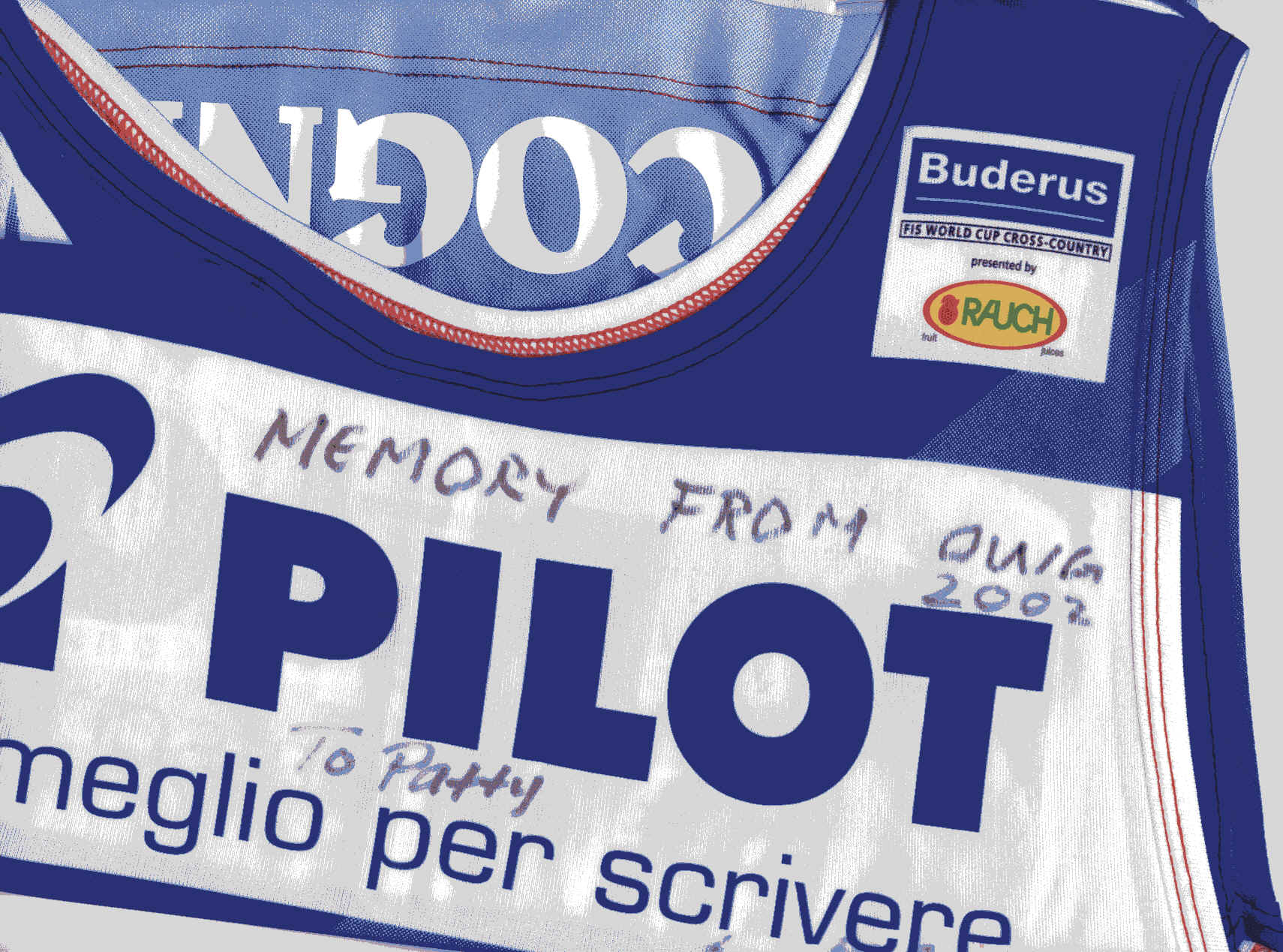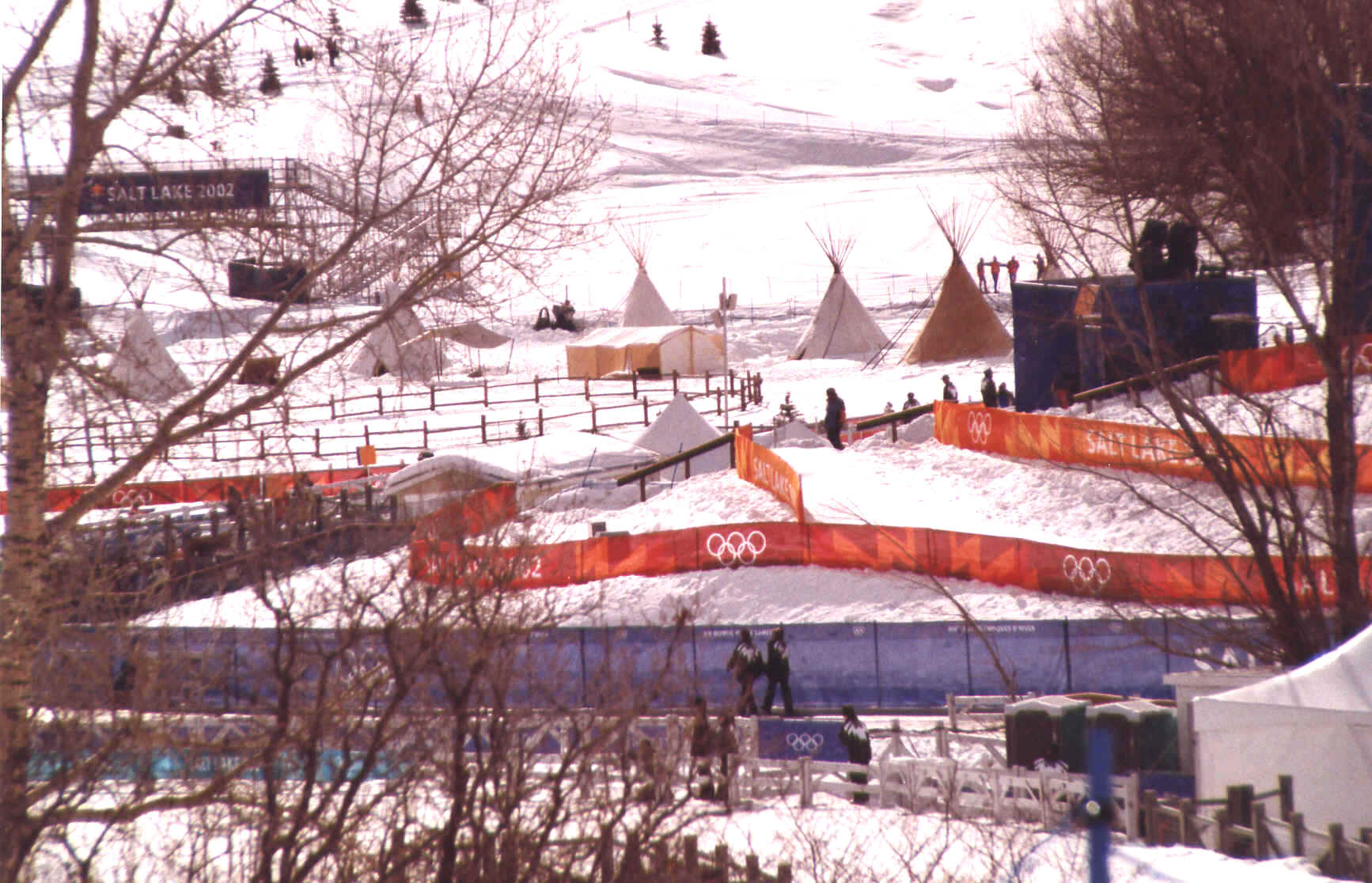
What we did continued. . . . .
Raymond was our weather man. When the actual people who were in charge of 'taking the temperature of the snow' and all those related things, faxed the information up to us, he made copies of it and posted them in the glass show cases on the outside of our trailer and put a copy in each of the country's mail boxes in our office. Also, when the athletes needed to know information right away, copies of it would be made and then Raymond would take it and go up to the wax cabins and tape it on their door. If they were there, then he gave it to them.

Another picture of the trails. The snow isn't really pink, but this was taken later on in the day and the colors were different. If you look really hard, you can see some of the trails winding around the hillside.
At the China wax cabin, only one of the women athletes was there and she asked Raymond to wait until the coach got back. He was sitting on a bench and she walked over and pinned a small pin from China on his accreditation lanyard which he thought was really nice of her to do. Generally we aren't in the position to trade pins as we can't within the office and unless you are approached, but you can't initiate it.
Back to the weather. . . . Can you believe that every half hour someone would walk the course and take the temperature of the snow? I thought that was rather odd, but I didn't realize at the time that information would determine what skis the athletes used and also what kind and how they put the wax on their skis.
I foolishly asked one of the skiers if they weren't really cold out there on the course when it was way below freezing. All they wear is this skin tight outfit. I was told that it was hard work going up and down the hills and that most all of them really were quite warm and sweaty and you didn't feel the cold until you finished skiing.
Dumb me, I asked so many foolish questions but I did preface it by telling them I knew nothing about their sport hoping that they would realize they had a real dumb grandma on their hands. They all were very nice and explained lots of things to me, sometimes without me asking which I loved. I got quite an education about winter sports of which I am grateful.
Time for an other one here.

The area by the red screening is known as Biathlon Hill. Named that, as you can stand in that area and see the skiers ski and shoot. The blue tower was for the media. Notice the yellow jackets? When you see pictures that show a black strap across someone's back, that is their half pack. Sure beats having pockets to put things in, although our clothes had so many zippers and pockets that you couldn't find anything if you put your stuff in them as you wouldn't know which one to look in. We even had zippers under our armpits on the jackets. Called ventilation. LOL
We carried our water bottles, sun screen, lip balm, play book, and anything else that we needed in the half packs. It even had an outside pocket to put your cell phone! Also included was a large flap on the outside that was hooked to a strap, lift that up and you see a mesh zippered pocket to keep change or whatever in then a pocket behind that. On top of the pack was a two way zipper that opened up the main part of the pack. All of it was water proof as were our clothes.
The play book that I mentioned is a small book that is stamped daily to keep record of the days that we were working. After six days you were rewarded with a memorabilia item from SLOC. The first three times were collectible Olympic pins, then a beautiful stainless steel thermos. The next item was a wallet that basically held business cards. Everything that we received had the Olympic emblem on it. Raymond got up to the 24 days and got the thermos but I missed it by two days.

This is the play book.
The athletes, too, were so grateful and surprised that by the time they had walked up the hill to the compound after a race, that we would have the unofficial results already for them. We couldn't really take the credit for that as we had it faxed up to us from the CMB and all we did was make copies of it for distribution.
There was a 15 minute waiting period after each race before the official results were made as during that time a team could post a protest. It would cost them $50 American dollars and it wasn't returned whether they were right or wrong. There was a panel of people that comprised what is called a 'jury' that would make the decisions regarding the protest using video's, photos, and the rule book. During the Olympics it was a fifteen minute wait but for the Paralympics they had thirty minutes. We didn't have very many protests which was wonderful. There were volunteers and others all along the course that watched what was happening for each and every athlete and any incidents were reported via radio. The rules are really very strict on the do's and don'ts.


This is a bib that was given to me by a representative of the Federation of International Skiing , Bengt Erik Bengtsson, of Switzerland; the Head of the Nordic Office, Race Director Cross Country. I scanned it but it is bigger than the scanner but the left picture is the top of the front, and the right picture is the bottom of the front. His wife, Solveig Bengtsson, gave me a beautiful silk scarf with the FIS initials. They were the neatest people!
Another one of the things happening was the day before each race, the coaches had to come in and give us a list of who will be participating. Forms are made out, signed, then a copy made that is given to the coach. If there are any changes, we have to have it in writing a set of hours before the race will begin. All of that information goes down to the CMB so that they will know who will be on the course.

This is part of the Indian Village that was down amongst
the trails on the course. It was set up like the Pioneer village was;
people, activity, the works!
All of this information re:, bibs, start lists, results, jury minutes, and coaches meeting minutes all have to have a record kept in the computer and on paper. Part of our crew went to the coaches meetings which were generally held during evening time. We didn't go to those as we lived the furthest from the venue but they did have a meeting one afternoon that we attended. We were in charge of checking accreditation and Raymond even challenged one of the SLOC members from Salt Lake. We didn't know who he was. He had his accreditation under his sweater and we couldn't see it.
While the meeting was going on, we were sitting at the back of the room and you can't believe the feeling that came over both of us. Here we saw backs of jackets that said; Estonia, France, Russia, Napal, etc., for a total of 44 different countries. Talk about being overwhelmed to be amongst all of them. But, we are thinking about Italy in four years! <smile>
Very few of the athletes needed interpreters but plenty was available due to the LDS church's missionary program and Brigham Young University. I feel rather sad when I see people who know 6-8 different languages and all I can talk is English and some times that not very well! Many of the athletes could carry on conversations with each other as they knew their language. The couple from FIS could talk with anyone who came into the office and it was so neat to watch and listen. (They had a room in our office). They could talk with several at the same time, all in different languages, and switch back and forth. Amazing!
One thing I do want to include before I finish, is that the last two days of both the Olympics and Paralympics we put together Protocol booklets for the I.O.C. (International Olympic Committee), each team and other officials.
We made a total of about 400 booklets with the average of 100 pages each. A lot of the pages were two sided. Bless Xerox! Their machines made it so simple so that the only hard part was putting holes in for spiral spines and some with three holes for notebooks. The hand machines would only do a maximum of 5-6 sheets so it was a time consuming job. Toni did a tremendous job in organizing what was to go in them and we are sure that those receiving them, were pleased with them. I can say that, now I know what to put in them! <smile>
I could go on and on, but I think I will close with a picture of my pins. We hope you have enjoyed this small journey down the Olympic road of Salt Lake 2002. What wonderful memories, what wonderful friendships made, and what a wonderful time!
Thanks to Lori and Toni for letting us be a part of all of it in spite of my physical problems.